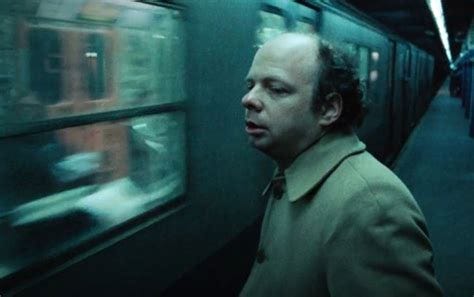Read Part 1, Part 2, and Part 3 of my series on Method acting—what it is, and what it isn’t.
Most of My Dinner with Andre (1981) takes place at Café des Artistes in New York City, where Wally (Wallace Shawn) eats dinner with his old friend, Andre (André Gregory). Over the course of their meal, the two men share a long, meandering conversation about art, spirituality, and finding meaning, which is initiated when Andre tells Wally about recently hitting a wall as an acting teacher. I had nothing left to say, he explains. I didn’t know anything. I couldn’t teach anything. Exercises meant nothing to me anymore.
But, Andre goes on, he was convinced to take on a group of students in a remote Polish forest inhabited by only wild boars and a hermit. Though there was a language barrier (the Polish students didn’t speak English and Andre didn’t speak Polish), his students were chosen because they, too, were questioning the theater. Together, the Doubting Thomases do improv, as they would in any other workshop, with one important difference, as Andre explains:
Except that in this type of improvisation, the kind we did in Poland, the theme is oneself. So, you follow the same law of improvisation, which is that you do whatever your impulse, as the character, tells you to do, but in this case, you are the character. So there's no imaginary situation to hide behind, and there's no other person to hide behind. What you're doing, in fact, is you're asking those same questions that Stanislavsky said the actor should constantly ask himself as a character: Who am I? Why am I here? Where do I come from, and where am I going? But instead of applying them to a role, you apply them to yourself.
The purpose of Andre’s workshop is learning how to play again. I would define play, a habit or skill that many of us must work to develop as adults, as feeling and acting extemporaneously upon sensation and desire. A willingness to play produces a feedback loop of self-esteem: play engenders self-confidence that, when exercised, nourishes the creative, innately curious, pro-social mechanism of play. The cycle continues from there.
How is play different from art? I would say that art is play disciplined; that art is play at work, perhaps.
I was reminded of Andre and Wally’s exchange by a recent interview with the French actor Isabelle Huppert. “When Huppert takes on a role,” writes The New Yorker’s Rebecca Mead:
“…she enters it as if arriving in a new country without having read a guidebook, alert to its strangeness and fascinated by its distinctiveness. ‘Sometimes I read these interviews with actors who say they prepare, and they imagine the characters’ background, and family, and where they come from,’ [Huppert] told me. ‘Well, it’s not my way of doing it. To begin with, I don’t believe in the idea of playing a character. I just believe in the idea of playing states—joy, sadness, laughter, listening, talking. That’s all I think about. In order to have the fiction come through you, you have to get rid of the idea of a character. The character is like a prison. And you could go further in that way of thinking—since it’s not a character I don’t need to know anything about her.’”
Huppert makes no specific claims about the Method here, but its muddled shadow looms so large over the past century of screen and stage that I think it’s safe to say they’re in conversation. With this tension in mind, Huppert’s approach could be seen as diametrically opposed to common misconceptions of the Method, which was of course developed by the Stanislavksi mentioned by Andre. If Stanislavski’s Method is thinking, then Huppert’s is embodied.
But I think of Stanislavski’s system, the infamous Method, as something akin to meditation. As yoga prepares the body for the stillness of meditation, the Method prepares the actor for the embodiment of acting. From this perspective, Huppert is not opting out of this process, because she never needed it. She always knew how to play.
See you in the New Year! Find me on Twitter and Instagram. Get my second novel, X, right here. Learn more about the history of this newsletter here.



wow i can't wait to watch this movie now